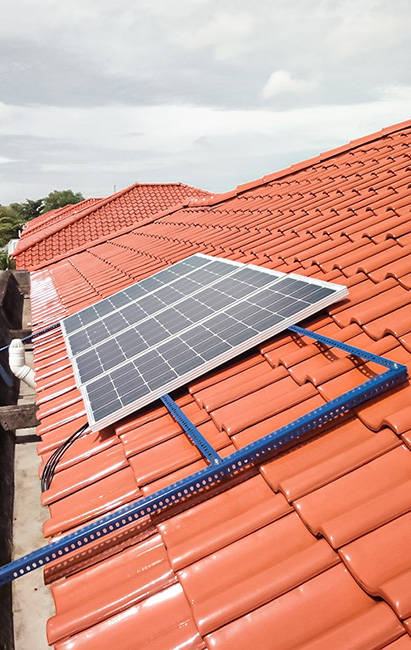Can Hail Damage Solar Panels?
People mistakenly compare hailstorms to snowfalls. You should be familiar with hailstorms if you live in an area where they are common. Hailstorms are usually colder than snow, as they form at higher elevations. Hailstorms can be dangerous under severe conditions.
Many property owners are asking if hail can cause damage to solar panels because of the dangers of hailstorms. Yes, hailstorms can cause damage to solarpanels. Depending on the severity of the hailstorm, they can cause damage to solar panels.
Is it likely that panels will be broken?
Tempered glass solar panels can withstand hail stones and are made of them. They must meet Australian standards and be able to resist hail stones up to 35mm in diameter, which is about the same size as a golf ball.
Hail stones larger than this can cause panels and roofs to shatter. We recommend that you inform your home and contents insurance provider about solar or reach out to a good solar repair so that they check for hail damage coverage.
What size of hail can damage a solar panel?
Although hail of different sizes has been reported to have caused damage to cars and solar panels in the United States. However, hail is more likely to cause damage than solar panels more significant than 2 inches.
The hail resistance of most solar panels has been tested. They can withstand hail up to 1-1/4 inches in diameter with an expected speed of 25-40 mph.
Checking for hail damage
First, check your inverter. If hail damage has occurred, your inverter will likely detect the problem. The inverter's screen should be visible. There could be an issue if you see any red light, faults (earth fault or ground fault), or no indication that any power generation is taking place. For further assistance, please contact your solar contractor.
Second, inspect the area from a distance. You can see if panels are damaged from a distance. Do not climb on your roof if hail damage is suspected.
What to do if your panels become damaged?
To have the panels replaced, contact a good solar installer. Your contents and home insurance should cover the cost. However, you will need to check with your provider as different insurance companies have different rules.
Use a protective cover temporarily.
A temporary solar panel cover is the best way to protect your system against hail damage. There are two types available for solar panel covers: hard shell or padded.
- For a hard shell cover to be secure, it will require special mounting. This cover does not absorb water or moisture. Protective measures for hailstorms and rain are also available. A hard shell cover is the best choice.
- A padded covering is more flexible and softer than a hardshell. This cover can help dampen hailstones striking your panels.
NOTE: Remember that solar panels covered will not generate solar power from the sun. It is best to not keep your solar panels covered for very long. The temporary covers should be removed when the hailstorm passes and the sky clears.

